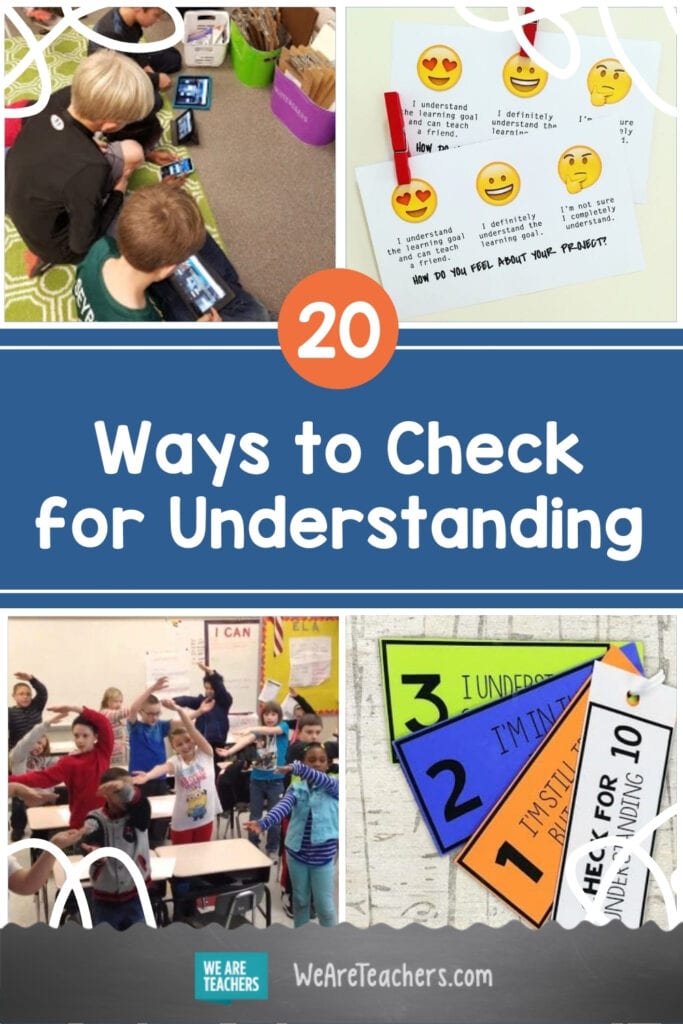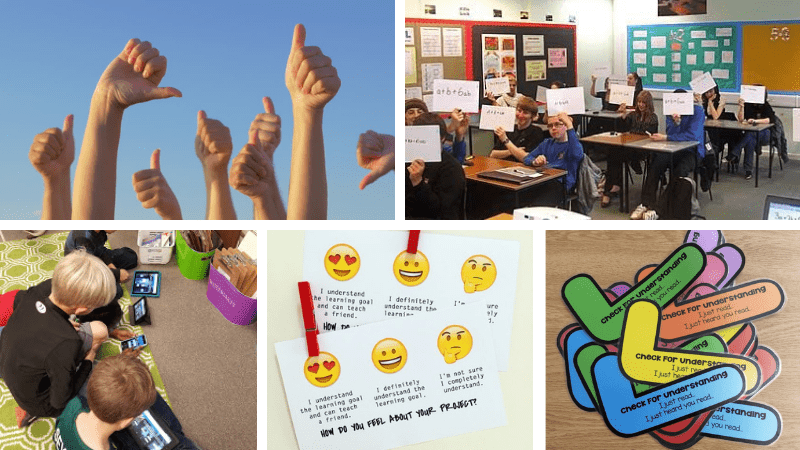It’s so important to stop frequently during your lessons to check for understanding with your students. After all, is there a worse feeling than being met with blank faces after you’ve delivered an entire lesson? Use these strategies throughout the day to make sure everyone is on track. Here are twenty fun and simple ways to see who’s good to go, who’s almost there and who needs some one-on-one.
1. Use technology.
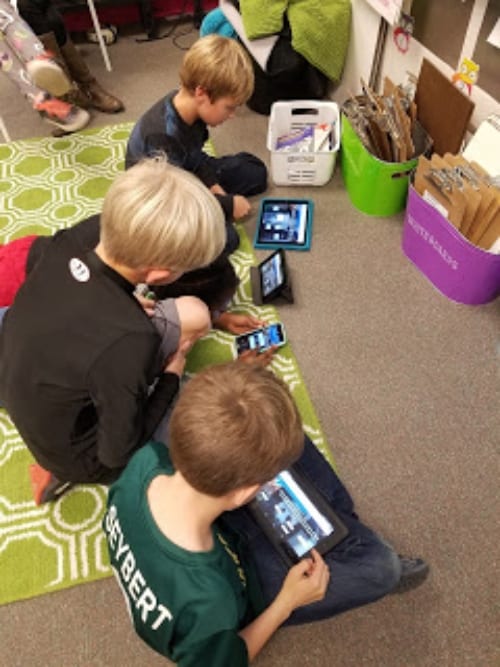
Source: The Primary Peach
One of the quickest ways to check for understanding is to have your kids hop on their device and use one of the awesome tech tools like Quizlet, Kahoot or Google forms to show what they know.
2. Ask open-ended questions.
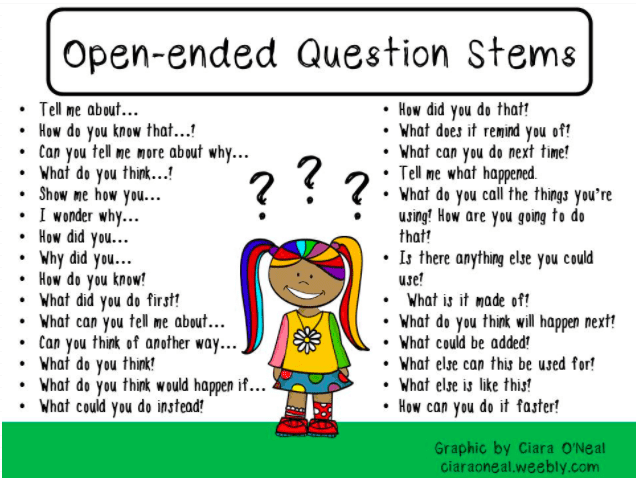
Source: Ciara O’Neal
If you ask yes/no questions to check for understanding, some students may default to yes because they don’t want to admit that they’re not quite there yet. Asking open-ended questions requires a little more thought and helps draw out where they really are.
[contextly_auto_sidebar]
3. Ask students to give a physical response.

Image source: YouTube
This can be a fun way to end a lesson, and students love it! Ask students to do something like put their hands on their head for yes and stand on one leg for no. Or ask a question and tell students to clap once if the answer is true and do jazz hands if it is false. Use your imagination and change it up each time.
4. Use emojis.
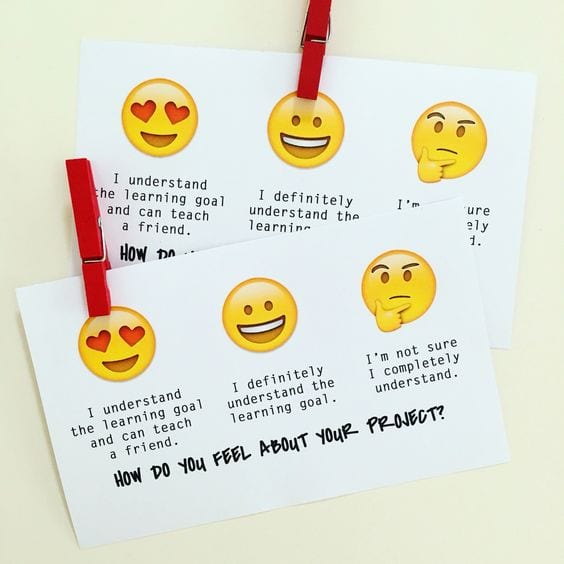
Source: Teach and Shoot
Prepare cards to leave at students’ desks like the one above. Let students attach their clips to show their level of understanding.
5. Ask questions “on the fly.”
Stop frequently to ask questions as you go through your lesson. See if students can make connections, define words, answer questions and explain concepts. Make it a natural part of your process so that your students will know they are coming and pay attention.
6. Use checkmarks.
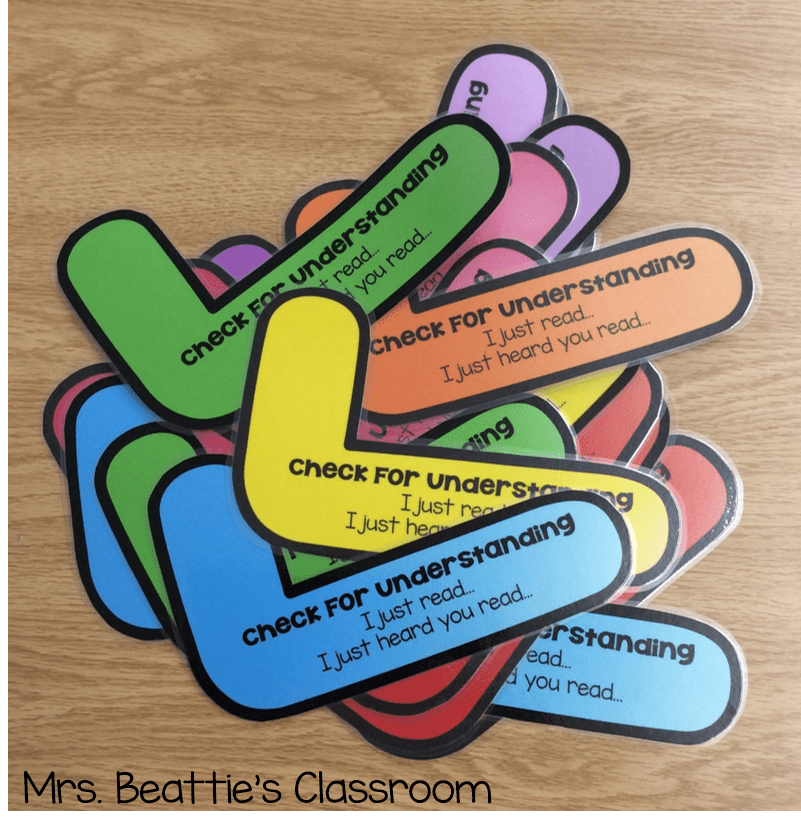
Source: Mrs. Beattie’s Classroom
Take a page out of The Daily Five‘s book and create these checkmarks to help your students remember to check for understanding as they read.
7. Show your thumbs.

Source: Shutterstock
Sometimes all it takes is a quick thumbs up or thumbs down (or even thumbs sideways) to make sure your students are all still on board. Stop frequently to check in and have your students hold them up high so you can take account.
8. Use exit tickets.
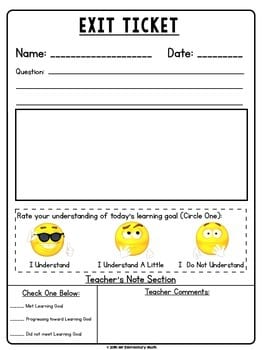
Source: Mr. Elementary Math
Download this cute freebie to create these exit tickets. Students can write the question of the day at the top and turn in their responses on the way out.
9. Flash whiteboards.
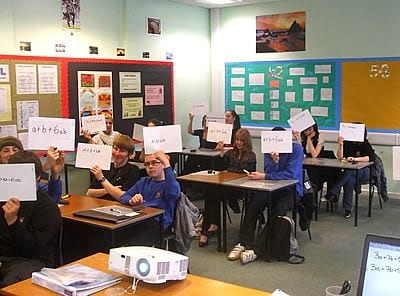
Image source: Pinterest
Ask one quick question that shows students are keeping up and have them write their answers on individual whiteboards. Do a quick sweep before they put them down. Pull any students together that still need more and re-teach.
10. Give it a four-finger rating.
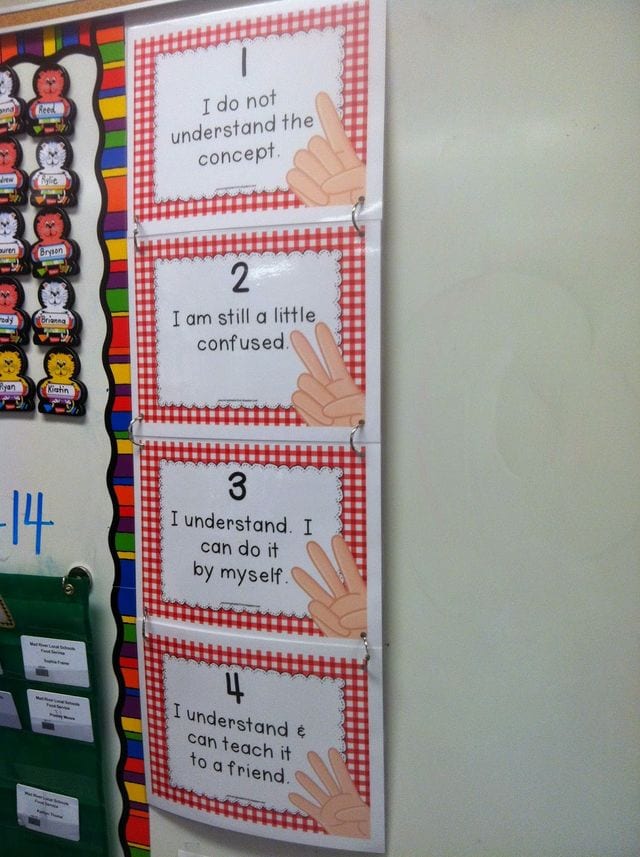
Source: Mrs. Wheeler’s First Grade Tidbits
Teach your students this quick check method and check in often to see where everyone stands. Pair up students who flash a 3 or 4 with students who flash a 1 or 2.
11. Do a Quick Write.

Source: Sly Flourish
Ask just one question and have students jot a quick paragraph on an index card to show that they understand. Have them share their answer with a partner or collect the cards to review for the next day.
12. Post your name on the stop sign.
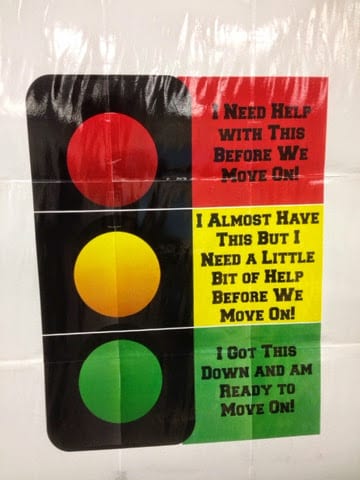
Source: Musings From the Middle School
This teacher blogger asks students to check for understanding by writing their name on a post-it, then attaching it to the stoplight on the appropriate color. She then groups students who need re-teaching and advises students who are ready to move on.
13. Give them a Yes/No question.
Check for understanding by asking students to flash a red piece of construction paper for no (they need a little more explanation) or a green piece of construction paper for yes (they get it and are ready to move on). Alternatively, laminate squares of red and green construction paper and glue them back to back to large popsicle sticks to make paddles for your students to show.
14. Do a self-assessment.
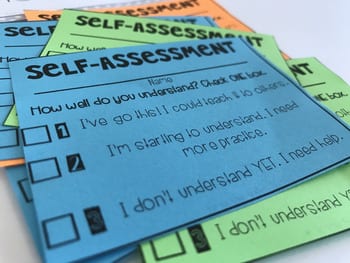
Source: Not So Wimpy Teacher
Download this free resource and print up a stack of self-assessment cards in different colors for different subjects. Pass them out as exit tickets to plan for the next lesson period.
15. Draw a T-chart.
Ask your students to tell you five (or whatever number you think is sufficient) things they learned from the lesson. Have them make a T-chart and on the left-hand side write a fact or opinion, and on the right side, give evidence to support their fact or opinion.
16. Do a quick sort.
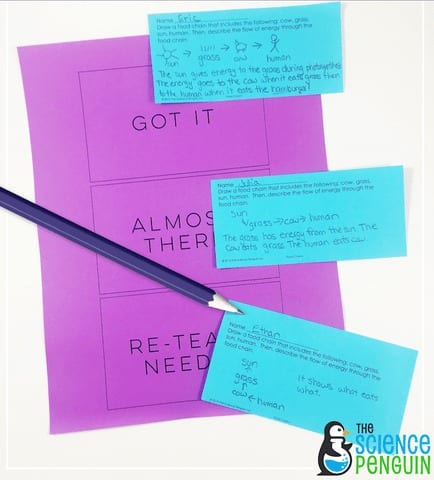
Source: The Science Penguin
Ask one question that you feel shows an understanding of the concept you are teaching. Have students write their answers on cards and collect them. Sort cards into piles: Got it, Almost There, and Re-Teaching Needed. Divide students into groups based on their answers and keep teaching.
17. Pick a card, any card.
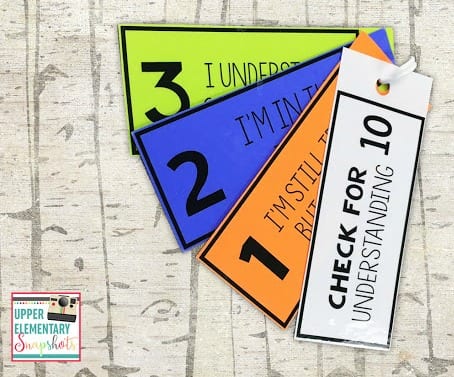
Source: Upper Elementary Snapshots
Print these free cards, laminate them, and connect them together with a ring or twist tie. Give one copy to each student to keep on their desk. When it comes time to check for understanding, students can just flip to the appropriate card, and you can do a quick check by color to see who still needs help.
18. Display mini flip charts.

Source: The Elementary Math Maniac
Make your own or if you’re not the crafty sort, buy 12 of these desktop flip charts for $16.49 from Really Great Stuff.
19. Use cooperative learning structures.



Source: 4th Grade Racers
This teacher/blogger uses cooperative learning structures to check for understanding in a fun and engaging way.
20. Reference this chart.

Source: Mia MacMeekin
This amazing infographic shows all kinds of imaginative ways to check for understanding. Print out a copy and display it in your classroom for inspiration.
What are your favorite ways to check for understanding? Share in the comments below. Plus, 15 ways to know when your students aren’t “getting” it.
Plus, be sure to subscribe to our newsletter for more great ideas!
